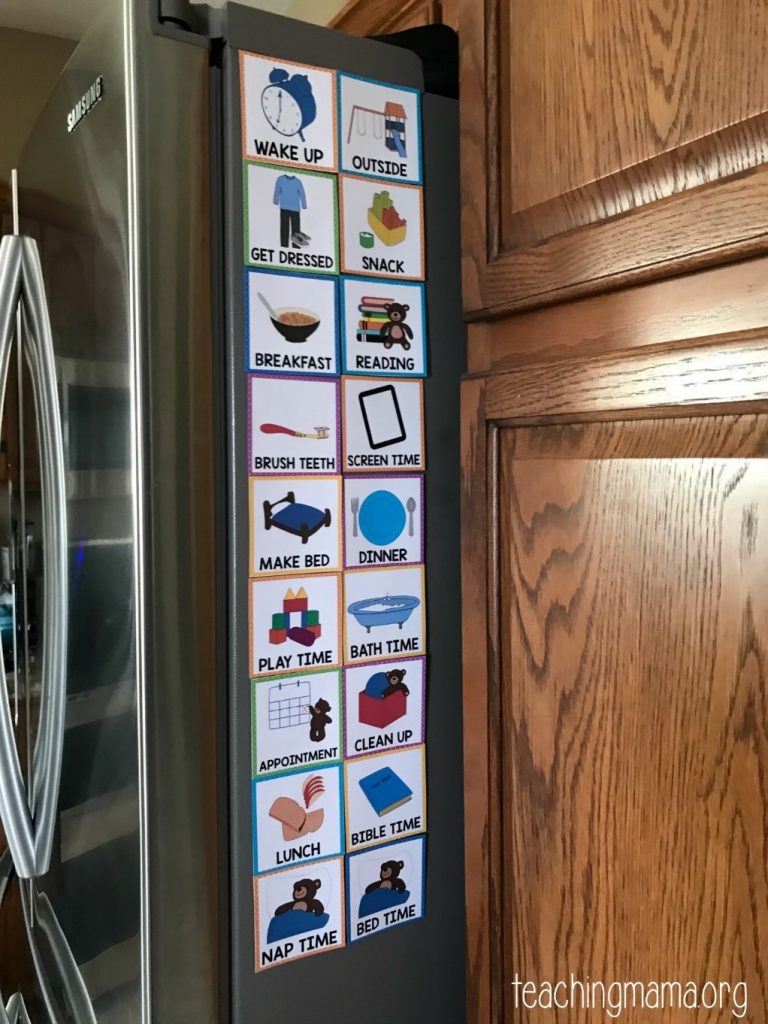It’s Time to Share the Agenda
Some children can quickly grasp and follow a daily schedule without being told, but this is not the case for all…. So, how do we help these individuals stay on track? A VISUAL SCHEDULE IS HOW! This is a visual representation of daily events. These events can be pictures of routine activities or the steps it takes to complete a specific activity. This allows you to give a verbal, visual and tangible direction to help set the expectations for the day. The visual schedule can be used at the beginning, during, and at the end of the routine to track what is completed and what is left to do.
How you use the visual schedule will depend on the ability and needs of your child!
- Example 1: If your child has a difficult time staying focused or remembering the task at hand you can use the schedule during the activity
- Example 2: If your child gets overwhelmed by too many tasks being presented you can show the schedule one activity at a time
- Example 3: If your child stays on task better when they know everything they have to complete, then you can show the entire schedule at the beginning of the routine. Continue to present the schedule to check off completed activities and stay on track
Tips for Creating a Visual Schedule:
- Use written text along with pictures to promote reading. *written text assures that everyone interacting uses the same language*
- Present visuals from left to right if your child can scan horizontally
- Horizontal orientation will also prepare the child for reading
- Note: Some children are vertical scanners. In this case, present visuals from top to bottom
- Photographing Tip: If you are trying to communicate “go potty” and you take a photo of the toilet, try to avoid including the bathtub in the picture to prevent the child from focusing on the wrong thing
- Photographing Tip: Take from the child’s perspective
- Remember to make the “picture” sturdy, easy to handle, and durable *print on cardstock, glue to a file folder and cover with contact paper or laminate*
- Pictures can be obtained from a variety of places
Reference: https://csefel.vanderbilt.edu/modules/module3b/handout2.pdf
Below are some examples of visual schedules that you could use with your children who need that extra assistance.



Check out our services tab to see how Behavior By Design can help you!